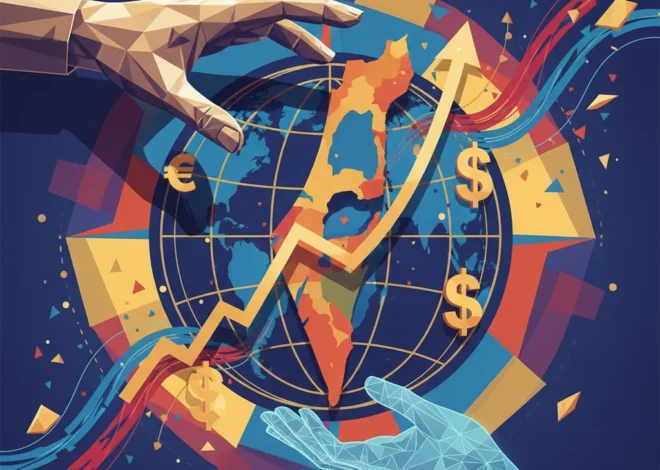
Beyond the Headlines: Why a Single Correction on Hong Kong Protests Matters for Global Investors
In the fast-paced world of global finance, information is the ultimate currency. A headline can move markets, a statistic can shift portfolios, and a single word can alter the perception of risk. On October 21st, the Financial Times issued a seemingly minor correction: “The Hong Kong protests involving up to 2mn people referred to pro-democracy demonstrations that sparked the National Security Law, rather than demonstrations against the law itself…” While it may appear to be a simple clarification of sequence, this distinction is anything but trivial. For investors, finance professionals, and business leaders, it is a crucial lesson in the causality that underpins geopolitical risk and its profound impact on the global economy.
Understanding that the massive 2019 pro-democracy protests were the catalyst for, not a reaction against, the National Security Law (NSL) is fundamental. It reframes the entire narrative from a simple public disagreement with a new policy to a story of a seismic political shift that was years in the making. This sequence of events—action leading to a powerful reaction—has had cascading consequences for Hong Kong’s status as a premier financial hub, affecting everything from the stock market and capital flows to the future of banking and fintech in Asia. This article delves into why this nuance matters, exploring the timeline of events, the quantifiable economic fallout, and the broader lessons for anyone involved in international investing and finance.
The Spark: Understanding the 2019 Pro-Democracy Movement
To grasp the significance of the NSL, we must first revisit the events that precipitated it. The Hong Kong protests of 2019 were not a sudden eruption but the culmination of years of simmering tensions regarding the city’s autonomy under the “One Country, Two Systems” framework, established when the UK handed the territory back to China in 1997. The immediate trigger was a proposed extradition bill that would have allowed criminal suspects to be sent to mainland China for trial. Critics feared this would erode the city’s judicial independence and expose residents to China’s opaque legal system.
What began as a response to a single piece of legislation quickly morphed into a much broader pro-democracy movement. The scale was staggering. At its peak, organizers claimed that nearly 2 million people—almost a quarter of Hong Kong’s population—took to the streets. These were not demonstrations against a law that already existed; they were a passionate defense of the city’s unique freedoms and a call for greater democratic accountability. For the global financial community, the initial reaction was one of caution. The Hang Seng Index (HSI) experienced volatility as the protests dominated headlines, but many viewed it as a temporary political storm that would eventually pass, as others had before. The underlying fundamentals of Hong Kong’s economy—its robust legal system based on English common law, its free flow of capital, and its role as the primary gateway for international finance into mainland China—seemed unshakable.
Truce on a Knife's Edge: Decoding the Economic Tremors of the Gaza Ceasefire for Global Investors
The Response: The National Security Law’s Chilling Effect
The protests, however, were viewed very differently from Beijing. Where international observers saw a vibrant civil society in action, the Chinese government saw a threat to national sovereignty and stability. The response, when it came, was swift and decisive. On June 30, 2020, China’s central government bypassed Hong Kong’s legislature and imposed the National Security Law.
The law’s provisions are broad and far-reaching, criminalizing four main activities: secession, subversion, terrorism, and collusion with foreign forces. The legislation granted mainland security agencies the power to operate in the city, gave Hong Kong’s chief executive the power to appoint judges for national security cases, and asserted jurisdiction over offenses committed outside of Hong Kong by non-residents. According to a Human Rights Watch analysis, the law has been used to fundamentally dismantle the city’s freedoms, leading to the arrest of opposition politicians, activists, and journalists, and the closure of independent media outlets and civil society groups.
This event marked the true inflection point for investors. It signaled a fundamental shift in the “One Country, Two Systems” principle. The political risk was no longer a temporary variable; it was now embedded into the very legal and operational framework of the city. The distinction highlighted by the FT’s correction is paramount here: the NSL was not a policy debated and protested by the public; it was the definitive answer to that protest.
To clarify this critical timeline, consider the following sequence of events and the market’s reaction:
| Period | Key Event | Impact on Finance & Investing Sentiment |
|---|---|---|
| March – June 2019 | Introduction of the extradition bill and start of mass protests. | Initial market uncertainty and volatility. The Hang Seng Index sees dips, but the core investment thesis for Hong Kong remains largely intact for many. |
| June 30, 2020 | Beijing imposes the National Security Law on Hong Kong. | A seismic shock to investor confidence. Concerns shift from temporary disruption to long-term, structural changes in legal and political risk. |
| 2021 – Present | Widespread arrests under the NSL, closure of media outlets (e.g., Apple Daily), and electoral system overhaul. | Sustained capital outflows, relocation of corporate headquarters, and a significant derating of Hong Kong’s stock market compared to global peers. |
Quantifying the Fallout: The New Economic Reality
The implementation of the NSL has had tangible and far-reaching consequences for Hong Kong’s economy and its role in global finance. The shift in investor sentiment was not just theoretical; it can be measured across several key areas of the financial ecosystem.
The Stock Market and Capital Flows
Perhaps the most visible indicator has been the performance of the Hong Kong stock market. The Hang Seng Index has significantly underperformed its global counterparts since the NSL’s enactment. While global markets surged post-pandemic, the HSI has been mired in a prolonged downturn, reflecting a “geopolitical risk premium” that investors now demand. The market’s valuation has shrunk, and IPO activity, once a crown jewel of the Hong Kong exchange, has dwindled. According to Bloomberg data, Hong Kong’s stock market has seen trillions of dollars in value erased from its 2021 peak, a testament to the deep-seated concerns over China’s economic slowdown and the political climate.
Beyond public markets, there has been a notable shift in private capital. Anecdotal and statistical evidence points to significant capital flight, with wealthy families and corporations moving assets to perceived safe havens like Singapore. This impacts the banking sector, which has had to navigate a complex web of international sanctions and local legal requirements under the NSL, creating a challenging compliance environment for global financial institutions.
The Peril of Prosperity: When Economic Blueprints Ignite Geopolitical Firestorms
The Future of Fintech and Innovation
Hong Kong has ambitions to become a global hub for financial technology (fintech) and Web3, including technologies like blockchain and cryptocurrencies. However, the political climate presents a fundamental paradox. The core ethos of many blockchain applications is decentralization and censorship resistance—principles that stand in stark contrast to the centralized control exemplified by the NSL. While the government is promoting a regulated virtual asset trading regime, innovators and investors in the fintech space remain wary. The free-wheeling, experimental environment that allows cutting-edge financial technology to flourish is difficult to sustain when concerns about data security, freedom of speech, and regulatory overreach are paramount.
The Broader Lesson: Geopolitics as a Core Driver of Modern Economics
The story of Hong Kong serves as a powerful case study for a broader trend in the 21st-century global economy: the primacy of geopolitics in financial analysis. For decades, many economic models treated political risk as a secondary, often qualitative, factor. Today, it is a primary driver of market behavior, capital allocation, and long-term investment strategy.
From the U.S.-China trade war to the conflict in Ukraine, political decisions are creating economic realities that cannot be ignored. Understanding the nuances—the “why” behind the “what”—is essential. The FT’s correction is a microcosm of this principle. Knowing that the NSL was a response to a massive pro-democracy movement, rather than an isolated policy, allows for a more accurate assessment of future risks. It suggests that any future signs of large-scale civil dissent could be met with similarly forceful measures, a critical insight for any long-term investor.
For professionals in finance, investing, and international business, the key takeaway is the need to integrate sophisticated geopolitical analysis into all decision-making processes. This goes beyond reading headlines; it involves understanding historical context, cultural dynamics, and the strategic objectives of state actors. The world of finance is no longer separate from the world of politics; they are inextricably linked, and the ability to navigate their intersection is what will define success in the years to come.
The Haiku That Captured a Global Tax Headache: Deconstructing the Economics of Property Levies
In conclusion, the clarification of a single sentence in a world-renowned financial newspaper serves as a potent reminder that in the complex interplay of politics and economics, details and causality are everything. The Hong Kong pro-democracy protests were not a footnote in the city’s history; they were the catalyst for a new chapter that has reshaped its identity and its function in the global financial system. For investors and business leaders, ignoring this critical sequence of events is not just a historical misinterpretation—it’s a fundamental failure of risk analysis in an increasingly complex world.


